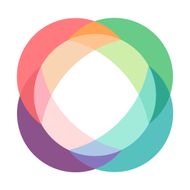In a world where access to quality healthcare is increasingly tied to economic privilege, emerging financial technologies have the potential to transform health outcomes for underserved populations. One such innovation is Interledger, a protocol that enables seamless payments across different ledgers and currencies. While it’s often associated with remittances, cross-border payments, and open finance, its impact on global health is only beginning to be explored.
The Problem: Financial Barriers to Healthcare
Across the globe, millions of people delay or avoid healthcare due to financial barriers:
In many low-income countries, patients must pay out-of-pocket for basic services.
Migrant workers often struggle to send money home to pay for a family member’s treatment.
Community health programs lack sustainable funding mechanisms, especially in remote areas.
Traditional banking and payment systems are slow, expensive, and often exclude the very communities most in need of healthcare services.
A New Vision: Health Wallets Powered by Interledger
Imagine a world where:
A mother in Kenya receives instant health credits from her sister in the U.S. via her mobile phone.
A non-profit organization funds dozens of rural clinics across Africa with streaming micro-donations collected globally.
Patients can pay per second for telemedicine services with real-time, low-cost micropayments — without needing a bank account.
Interledger makes this vision possible by enabling interoperable, currency-agnostic, and instant payments. This allows for the development of digital health wallets, where funds can be received and spent seamlessly, whether in dollars, mobile money, or cryptocurrency.
Real-Time Donations and Micro-Insurance
With the Interledger Protocol (ILP), we can reimagine how healthcare services are funded and delivered:
Streaming Donations: Instead of one-time crowdfunding, individuals can stream donations to a clinic or a health worker in real time, paying as services are rendered.
Micro-Insurance: Affordable insurance models could be powered by continuous, usage-based payments, unlocking coverage for millions.
Data Incentives: Patients who share health data (anonymously) for research could be rewarded instantly via ILP-enabled platforms.
Community-Based Use Cases
In community health settings, Interledger could be used to:
Support community health workers through real-time payments based on verified visits or outcomes.
Enable cross-border health collaborations, where patients can receive funds for treatment from global contributors without friction.
Integrate open-source health apps with Interledger for transparent, trackable spending.
Challenges and the Road Ahead
Of course, there are still hurdles: regulatory clarity, user education, and digital infrastructure are all critical factors. But the potential is profound.
If we can connect financial innovation with health equity, Interledger may not just change how money moves — it could change lives.


Top comments (0)